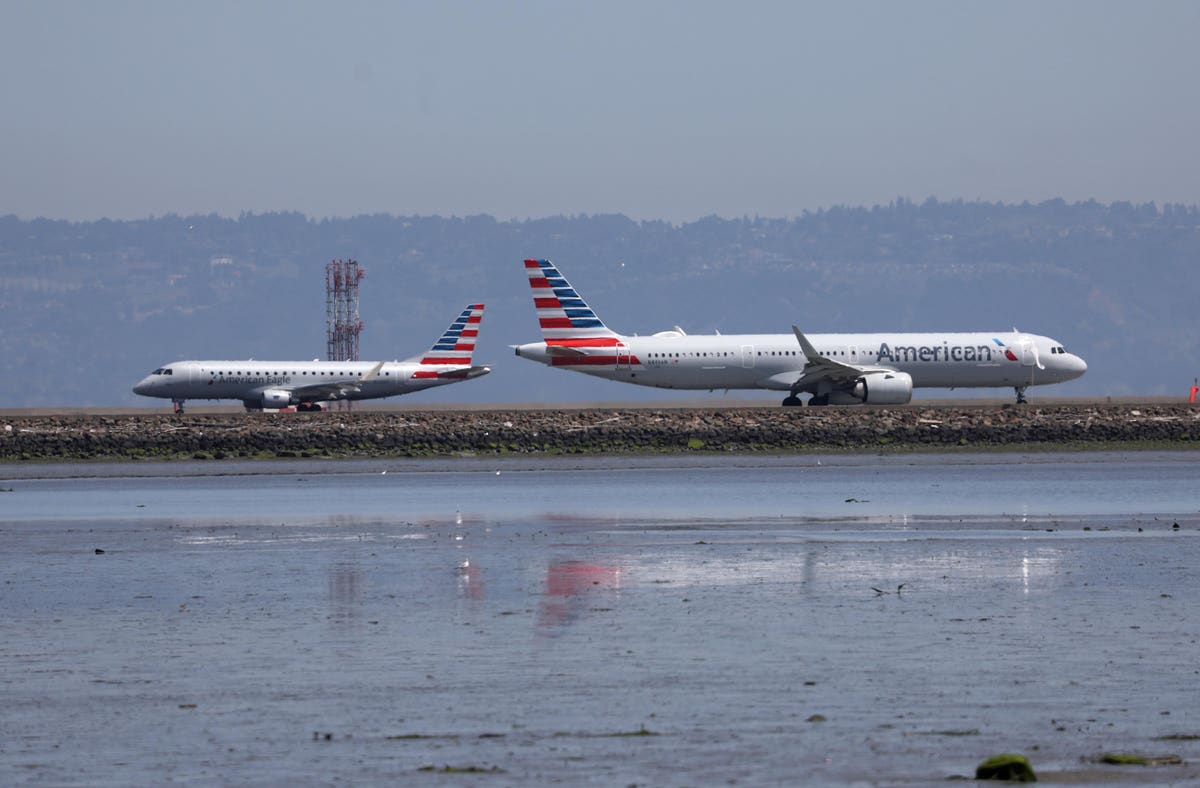American Airlines stock (NASDAQ
NDAQ
Returning to the pre-inflation shock level means that AAL stock will have to gain more than 65% from here. However, we do not believe that will materialize any time soon and estimate American Airlines’ valuation to be around $16 per share, implying over 15% gains. This is because the company has higher debt levels, and its operating margin of 7.3% in 2022 is still below its pre-pandemic levels. With elevated fuel costs, the company may see slower earnings growth in the near term. We believe that the adjusted earnings will likely remain below its pre-pandemic figure of $3.79 (2019) in 2023 as well as 2024.
Our detailed analysis of American Airlines’ upside post-inflation shock captures trends in the company’s stock during the turbulent market conditions seen over 2022 and compares these trends to the stock’s performance during the 2008 recession.
2022 Inflation Shock
Timeline of Inflation Shock So Far:
- 2020 – early 2021: Increase in money supply to cushion the impact of lockdowns led to high demand for goods; producers unable to match up.
- Early 2021: Shipping snarls and worker shortages by the coronavirus pandemic continue to hurt the supply
- April 2021: Inflation rates cross 4% and increase rapidly
- Early 2022: Energy and food prices spike due to the Russian invasion of Ukraine. Fed begins its rate hike process
- June 2022: Inflation levels peak at 9% – the highest level in 40 years. S&P 500 index declines more than 20% from peak levels.
- July – September 2022: Fed hikes interest rates aggressively – resulting in an initial recovery in the S&P 500 followed by another sharp decline
- Since October 2022: Fed continues rate hike process; improving market sentiments help S&P500 recoup some of its losses
In contrast, here’s how AAL stock and the broader market performed during the 2007/2008 crisis.
Timeline of 2007-08 Crisis
- 10/1/2007: Approximate pre-crisis peak in S&P 500 index
- 9/1/2008 – 10/1/2008: Accelerated market decline corresponding to Lehman bankruptcy filing (9/15/08)
- 3/1/2009: Approximate bottoming out of S&P 500 index
- 12/31/2009: Initial recovery to levels before accelerated decline (around 9/1/2008)
AAL and S&P 500 Performance During 2007-08 Crisis
AAL stock declined from nearly $26 in September 2007 (pre-crisis peak) to below $3 in March 2009 (as the markets bottomed out), implying AAL stock lost almost 90% of its pre-crisis value. It recovered post the 2008 crisis to levels of around $5 in early 2010, rising 70% between March 2009 and January 2010. The S&P 500 Index saw a decline of 51%, falling from levels of 1,540 in September 2007 to 757 in March 2009. It then rallied 48% between March 2009 and January 2010 to reach levels of 1,124.
AAL Fundamentals Over Recent Years
AAL revenues fell sharply from $45.8 billion in 2019 to just $17.3 billion in 2020 as the Covid-19 outbreak hit the airline industry hard. Revenues improved gradually over 2021 before reaching $49 billion in 2022, with a recovery in travel demand. American Airlines’ revenue passenger miles surged 2.3x between 2020 and 2022, while passenger revenue per available seat mile rose 69%.
Despite higher revenue, earnings decreased from $3.80 in 2019 to $0.20 in 2022 due to higher fuel and other operating costs. AAL reported a $18.36 per share loss in 2020 when the pandemic severely impacted its financials.
Does AAL Have A Sufficient Cash Cushion To Meet Its Obligations Through The Ongoing Inflation Shock?
AAL’s total debt increased from $24.3 billion in 2019 to $38.1 billion in 2022, while its total cash increased from around $4.0 billion to $13.4 billion over the same period. However, the rise in cash balance is primarily due to additional debt raised, as heavy negative operating cash flows in 2020 of $6.5 billion almost completely wiped out positive operating cash flows in 2019, 2021, and 2022. The high debt burden is a near-term risk that the company faces.
Conclusion
With the Fed’s efforts to tame runaway inflation rates helping market sentiments, we believe American Airlines stock has the potential for solid gains once fears of a potential recession are allayed. That said, the pressure on the company’s balance sheet remains a significant risk factor to realizing these gains.
While American Airlines stock may have some room for growth, our analysis of American Airlines vs. Delta Airlines finds the latter to be a better investment option. Check out how other American Airlines Peers fare on metrics that matter. You will find other valuable comparisons for companies across industries at Peer Comparisons.
What if you’re looking for a high-performance portfolio with a low downside instead? Here’s a reinforced value portfolio that has beaten the market consistently while limiting losses during periods of sharp market declines.
Invest with Trefis Market Beating Portfolios
See all Trefis Price Estimates
Read the full article here


